1. Ensure the fuel and oil mixture is correct, as recommended by the manufacturer. If necessary, drain the tank and refill with fresh gas-oil mix.
2. Clean or replace a dirty air filter if one is available on your saw model.
3. Adjust the carburetor idle speed screw to increase engine performance as per instructions in your owner’s manual, if needed; make sure that it isn’t set too high, which can cause overheating or other problems.
4. Check for spark plug fouling and replace with a new one if necessary (ensure its heat range is suitable for your chainsaw).
5. Sharpen or replace any dulled blade teeth, ensuring they are all of equal length and sharpness when finished working on them; this will help reduce strain on the engine while cutting wood efficiently again.
6. Remove any debris from within around the muffler area using compressed air to ensure there are no blockages preventing proper exhaust flow from occurring – this could be causing compression issues to occur when starting up!
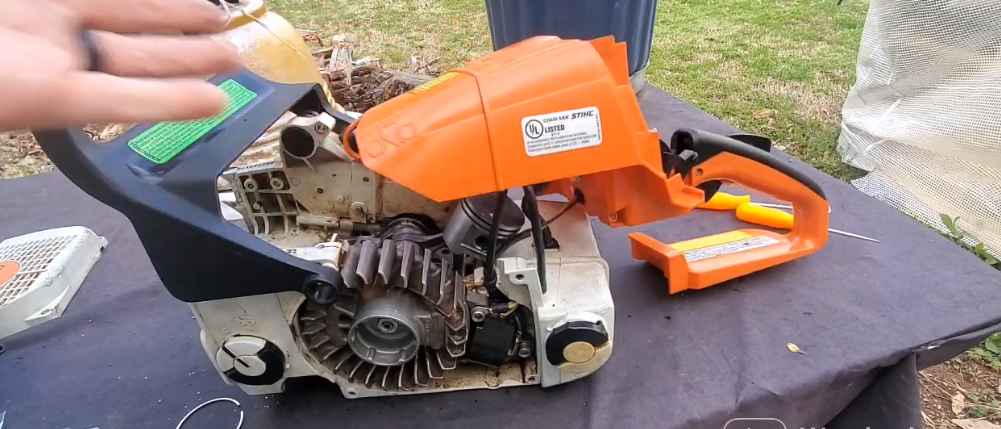
What causes a Chainsaw to Have Low Compression?
Low compression in a chainsaw can be caused by a few different factors. The most common and likely culprit is an issue with the cylinder or piston rings. If these components are not properly sealed, air will escape from the combustion chamber when it should remain compressed until ignited by the spark plug.
Additionally, if your chainsaw has recently been used for an extended period of time, then it may have accumulated a bit of carbon buildup, which can contribute to low compression in the engine as well.
Other possible causes include problems with carburetor adjustment, dirt, or debris getting caught in the fuel lines, and faulty spark plugs.
Or fouled spark plug wires, worn-out crank seals that aren’t providing enough suction to draw fuel into the cylinders, and even incorrect timing settings on older models.
How Do You Increase Compression on a Chainsaw?
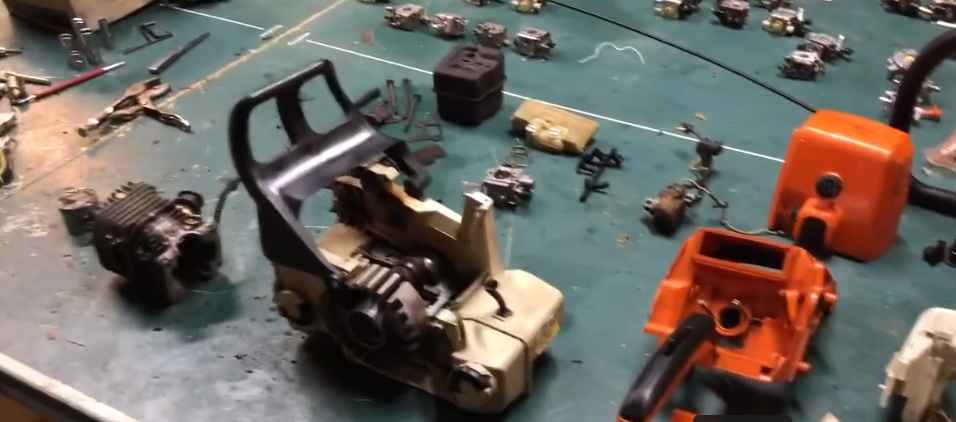
If you’re looking to increase the compression on your chainsaw, there are a few steps you can take. First, check the spark plug. If the engine has low compression and is running poorly, cleaning or replacing the spark plug may help.
You should also make sure that all the connections between components within your chainsaw’s motor are tight and secure. A loose connection will cause air leaks, resulting in reduced pressure and lower performance from your saw.
Another way to increase compression is to adjust the amount of fuel being delivered so that it matches how much air is entering your cylinder head.
Too much fuel will reduce compression, but too little won’t provide enough power for cutting wood efficiently.
Additionally, making sure that your piston rings are functioning correctly will help achieve optimal levels of compression by preventing any oil leakage out of the combustion chamber, which can lead to poor engine performance overall.
How Much Compression Should a Chainsaw Have?
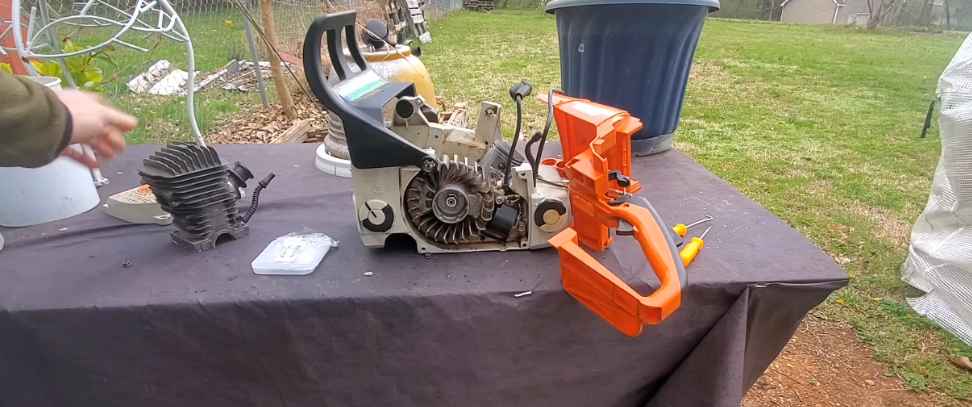
When it comes to chainsaws, one of the most important factors to consider is compression. Compression determines how much power a chainsaw can generate and its overall performance.
Generally speaking, a good rule of thumb for determining the proper amount of compression for a chainsaw is that it should have at least 90-95 psi (pounds per square inch).
This ensures that your saw has enough power to cut through thick tree branches or other materials without bogging down or jamming up. If you’re using a standard two-stroke engine, you’ll want to check your owner’s manual for the recommended compression level, as this can vary based on the make and model of your saw.
Additionally, if you’re looking for more power from your saw but don’t want to increase its size too much, there are special high-compression pistons available that can help boost the output by 10% – 15%.
By taking into account these factors when selecting a chainsaw, you’ll be able to get maximum performance out of it, while also knowing that it will last longer and perform better over time.
How Do I Know If My Chainsaw Has Good Compression?
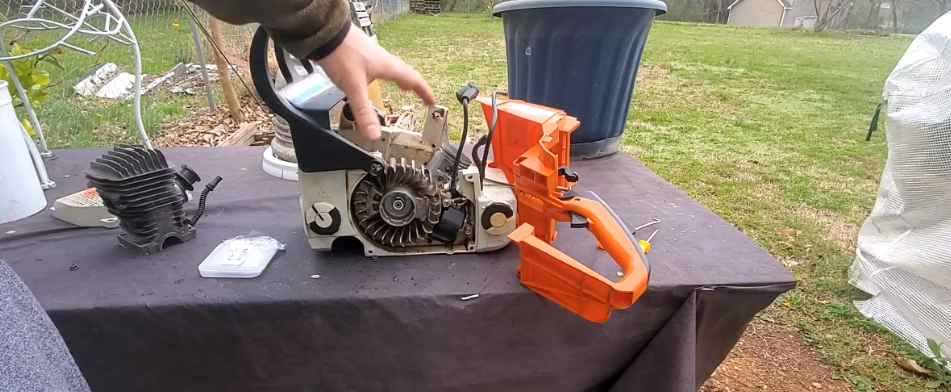
When it comes to determining if your chainsaw has good compression, there are a few key things you can check. First, make sure that the spark plug is in working order and that the gap between its contacts is set correctly according to your owner’s manual. Next, remove the spark plug and inspect it for signs of wear or damage.
If everything looks okay, then replace it with a new one and reconnect it securely.
Finally, pull the starter cord several times while keeping an ear out for changes in engine sound; this will help you determine whether there’s enough compression within the cylinder chamber when fuel meets air during combustion.
If any irregularities are heard (e.g., backfiring) or felt (e.g., sluggishness), then chances are your chainsaw doesn’t have good compression and needs further inspection by a professional technician before use can be resumed safely.
Stihl chainsaw low compression diagnoses and How To
Chainsaw Low Compression Symptoms
Low compression on a chainsaw can be recognized by numerous symptoms, such as difficulty starting, rough idling, and lack of power. Additionally, if the engine is not running properly due to low compression, then it may produce white smoke or develop an oily smell.
If any of these symptoms are present in your chainsaw, it is important to diagnose the cause right away and address it before further damage occurs.
Stihl Chainsaw Compression Test
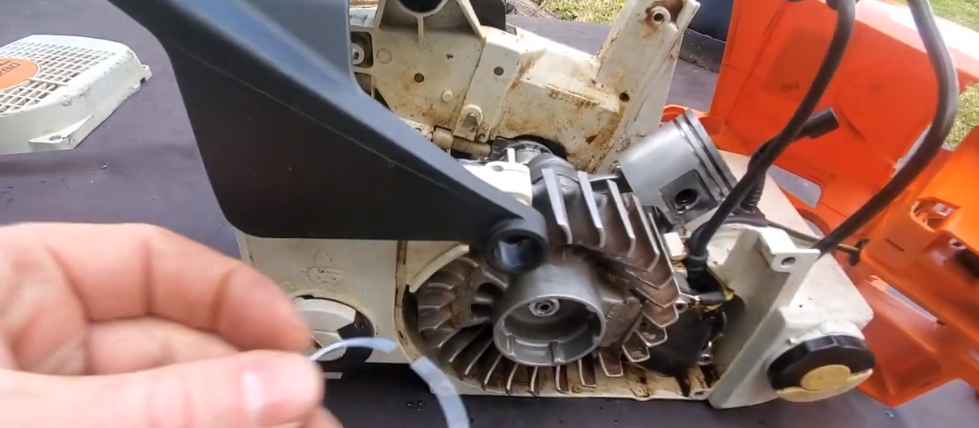
A compression test is an important part of maintaining a Stihl chainsaw and ensuring it runs safely and efficiently. This test involves checking the pressure in the cylinder of the engine, which should be between 90-110 psi when cold.
If it falls below this range, then something needs to be done to rectify it such as adding more oil or replacing parts like spark plugs or piston rings.
A compression tester can also be used to diagnose other issues with the engine, such as a bad fuel mixture or sticking valves. Regular testing will help keep your Stihl chainsaw running smoothly for years to come!
Husqvarna Chainsaw Low Compression
The Husqvarna Chainsaw is a powerful and reliable tool for cutting wood, but it can be prone to low compression issues. Low compression can cause the chainsaw to run rough, or not at all, due to improper air-fuel mixture in the combustion chamber.
In some cases, adjusting the carburetor settings may help restore proper engine performance.
If that fails, then replacing spark plugs and cleaning or replacing filters may also be necessary.
Chainsaw Cylinder Scoring Repair Method
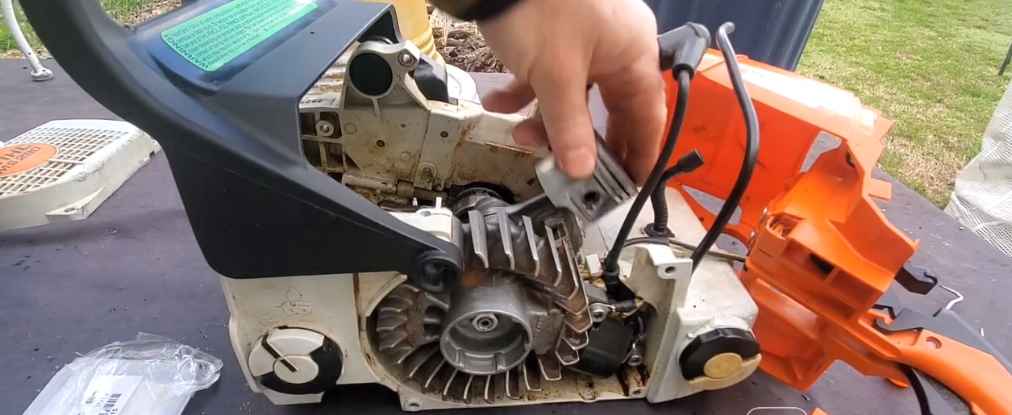
Chainsaw cylinder scoring repair is a method used to fix damage caused by dirt and debris that can accumulate in the saw’s piston chamber. This type of damage, referred to as “scoring”, occurs when particles become embedded in the walls of the piston chamber and cause abrasive wear on the metal surface.
Repairing this kind of damage typically involves replacing or resurfacing parts such as pistons, bearings, gaskets, seals, and cylinders using specialized tools such as a die grinder or honing tool.
The process also requires cleaning out all debris from within the piston chamber before reassembling it with new components. With proper maintenance, chainsaw cylinder scoring repairs can keep your machine running smoothly for years to come!
Chainsaw Compression Tester
A Chainsaw Compression Tester is a tool used to quickly and accurately measure the compression of an engine. This device plugs into the spark plug hole on a chainsaw, allowing users to read the pressure within the cylinder in just seconds.
By testing for proper compression levels, mechanics can diagnose engine issues such as piston ring wear or air leaks that could cause poor performance.
With regular use, this tool ensures that your chainsaw is running at its optimal level.
Conclusion
Low compression in a chainsaw can be frustrating and make it difficult to complete projects. The good news is that you can usually fix the problem yourself with some basic maintenance and troubleshooting. Start by checking the spark plug, air filter, fuel lines, and carburetor for debris or clogs.
If all parts are clean, try adjusting the idle speed of your saw. Lastly, if necessary, replace any worn-out components like gaskets or seals to ensure proper functioning of your chainsaw engine. By following these steps, you should be able to get your low compression chainsaw running properly again!